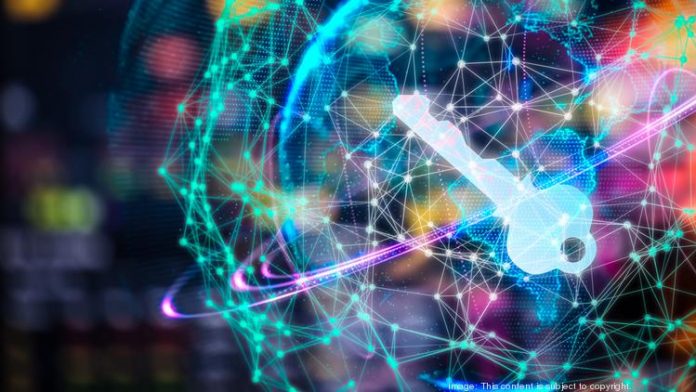This article is written by Lavanya Gupta, pursuing BBA LLB (Hons.) from the School of Law, Ansal University. This is an exhaustive article which deals with various modes of execution under the digital right management technologies.
Table of Contents
Introduction
The digital media with the analogue-to-digital conversation and technologies has increased vastly and the concerns of copyright-owning institutions by an individual or any organization with the music and movie industries have been rising. The computers were rising as a personal mode for household appliances which is very convenient for every customer to use the media originally with the broadcast, analogue, or probability of universal use in digital shape with the process of ripping and the viewing of content later. The combined internet and file-sharing tools made unauthorized distribution of copies with the copyright of digital media or the piracy in the digital world for more comfort. We will talk about terms used for digital rights management which inhibits the technology used with the desired content provider in this article. The growth of digital media conserves the technologies that were needed by digital rights management to get increased vastly.
Meaning of the digital right management
The way to protect the copyrights of digital media is known as digital rights management (hereinafter referred to as ‘DRM’). This includes the use of technologies to restrict the limit of copyrighting and the work which is used by proprietary software and copyrighted. The publishers were allowed to control the work done by paying users by digital rights management.
The companies were implementing the digital rights management system and its processes to help in preventing users from accessing certain assets and the organizations were allowed to avoid the legal issues which arose from unauthorized use. The growing role in data security is being played by digital rights management. The file exchange rise with the services of peer-to-peer like torrent sites, online piracy, etc. was the ban of the copyrighted material. The technologies that engage in piracy were not caught by digital rights management. But they make it steal or share the content in the first place as impossible.
How digital rights management works
The codes which prohibit copying were included in digital rights management most of the time and the codes which limit the time or the number of devices on a certain product that can be accessed. The code that prohibits copying was included in DRM most of the time and that code limits the number of times on devices with a certain product that can be accessed. The applications were encrypted in the media, data, e-book, content, software, or any other copyrighted material of the publishers, authors, and other content creators. The document can be accessed by only those who have the keys to the decryption. The tools were also used to limit or restrict the materials by which the users can do. The content, software, or product has many other ways to get protected. Restriction or prevention was allowed by users from editing or saving their content. Sharing or forwarding of product materials was also restricted or prevented for users. Printing your content was also restricted or preventive. The document or artwork may be printed only to a limited number of times for some users.
The creation of screenshots was not allowed to the users or any screengrabs of your content. The expiry date was set on the documents or media by which users will no longer be able to access it afterwards. This can be done by limiting the number of users who can put on the uses. The document may be revoked instantly after the user that has to listen to ten times or opened and printed any PDF 20 times. The access was locked only to the IP addresses of the individuals with locations, or devices.
If the media was only available to US residents then this means that it will not be accessible to the people living in other countries. The documents and the artwork of watermarks established their ownership and identity individually. To access the log of people and times for certain media, content, or software was allowed to publishers and authors to use by digital right management. We can also see a particular ebook that can be downloaded or printed by the accessor itself.
Digital rights management use cases
Digital rights management is very important in today’s world not only for the content creators but also for the companies and individuals who can use the digital assets licensed and can purchase from third-party creators. Some digital rights cases were used here as:
- To prevent unauthorized use of content digital rights management allowed all the authors, musicians, movie professionals, and other creators to their bottom lines for the protection and control of the distribution of their products.
- Many companies were helped by digital right management to access the confidential information to restrict access to the sensitive data at the same time to allow these files to get shared easily with the use of these technologies.
- It makes authors easier to investigate and identify the leaks of sensitive data when a business setting is used. The digital rights management can be called by some different names like information rights management or can be the rights management enterprise.
- The companies of financial services and the organizations of healthcare were turned into digital rights management to meet data protection regulations.
- To prevent digital work from alertness digital right management works.
- The creators want their work to get distributed in the original form to serve their intended purposes; digital rights management uses the Federal Deposit Insurance Corporation (FDIC) which prevents unauthorized redistribution of digital information which is sensitive.
Challenges of digital rights management
Digital Right Management was not agreed upon by everybody. Users who pay for listening to music on iTunes use it in every possible way they wish or would love to listen to songs on any device. Some businesses who pay thousands of dollars for a high-value industry were reported and willing to use DRM so that their competitors would not be able to get any free story for the same. DRM has some critics which were pointed out to create unfair advantages for businesses to have some money to burn because of smaller operations that were not affordable by the information which they need to grow their business. The technology of DRM was not a perfect solution. The Digital Rights Management code was incorporated by the copyright holders into their products by which the public may discover the way to work around it. If the content playable were made on only one person then some of the users would inevitably try to figure out the decryption keys and try to create another player who would be able to play the copyrighted content. In the hope of circumventing then users download the new players in the encryption of DRM. free tools were also used to remove the code of DRM which were unethical and readily available online.
Benefits of digital rights management
Copyright holders get protected from piracy by digital right management. Digital work was available by digital rights management code but tools can easily be removed. The shortcomings of digital rights management to offer numerous benefits. This educates users about copyrights and intellectual property rights. The copyrights were not concerned by most of the people who were passive when it comes to Digital Rights Management. They have no details with no issues with smaller details as long as they access the content they like.
Companies can communicate in place with digital rights management to users that they can and cannot do with the respect of digital content. This also helps in making a better way for the agreements of licensing and technologies. These technologies were aimed at restricting users to interact with content but listening to music on multiple devices or sharing any sort of content with friends and family. Encouraging vendors to look for other technologies that were better at DRM-free content as some of the users do not want to be restrained by DRM codes and support these vendors and were better at licensing than DRM. It also helps the author to retain the ownership of their work. It is straightforward that companies and users copy content from someone else’s e-book and rebrand it on their names. This stops anybody from altering the content possibly.
To protect their inventions this was also applied by the scientists who relied upon DRM. it helps to protect their income streams. To create their videos moviemakers and videomakers spend money in hopes that they will be able to recoup the investments when it hits the screens or when it gets distributed or streamed online. Only paying users to ensure that DRM can watch the video or movie. It also provides that the video is only accessible to a specific audience. The videos for instance with adult-oriented content should be available to adults who can verify their age. To secure the files and keep them private digital rights management provides help and also prevents unauthorized users from seeing confidential files efficiently.
Importance of digital right management
The companies can control access to confidential information with the help of digital rights management. These technologies use the access of restriction to sensitive data while at the same time allowing it to be shared securely. The technologies of digital right management make investigation and identity leaking easy for the authors. The creators who designed the Digital Rights Management Software offered the most powerful US Federal standard to encrypt and corporate the Digital Rights Management in Microsoft Office with no additional use of Microsoft servers. The data was controlled and protected by the Digital Rights Management Software were:
- Confidential internal and external information
- Content of web or intranet
- Music
- Own software
Invasive solutions were offered by the Digital Rights Management Software minimally to meet Sarbanes-Oxley 404 (SOX), Basel II, HIPAA, Gramm-Leach-Bliley, and 21 CFR Part 11 with the compliance for the above mentioned electronic data. The real-time was combined easily by the network of Total Document Control to monitor files and some applications were solved in compliance to control problems.
Effectiveness of digital right management in India
India is not a signatory of the WIPO Copyright Treaty and WIPO Performances and Phonograms Treaty. The amendment of 2012 of copyright laws which are implemented to protect the digital rights management. Section 65A of the Copyright Act, 1957, the criminal sanctions were imposed by the circumventing of “effective technological protection measures.” The information is criminalized interference under Section 65B with the digital right management. The distribution of technologies in the management information rights of the copies modified by Section 65 B and was criminalized. The terms used in the provisions were not explicitly defined with the Parliamentary Standing Committee in concern which was indicating the same to have been deliberated. The note was made by the Standing Committee on similar terms which were developed terms and used to consider the complexity in the light of the same was preferable to kept on open-ended.
The sentence for the prison was mandatory under both provisions with the maximum 2 years term, also, to find what is discretionary. The expectations were not included in the statute to the infringement of copyright which also includes the direct fair use of Section 65A that allows measuring the unless expressed prohibition with the simplicity to include such limitations. Section 65B, however, lacks any exceptions. Further, Section 65B (digital rights management information) allows other civil provisions to resort to other unliked Section 65 A. WIPO Internet Treaties were on the important note that they were not mandated in criminal sanctions and merely required in the “effective legal remedies”. Thus, India’s adoption of criminal penalties to ensure the compliance of the highest standards of internet treaties in WIPO. The amendment in 2012 in the entry of India to the WIPO Internet Treaties facilitated the ratification of the WIPO Internet Treaties which is mandatory under agreements like the Regional Comprehensive Economic Partnership (RCEP).
Conclusion
The way to protect the copyrights of digital media is known as digital rights management. This includes the use of technologies to restrict the limit of copyrighting and the work which is used by proprietary software and copyrighted. The technologies that engage in piracy were not caught by digital rights management. The applications were used by the publishers, authors, and content creators to encrypt the data, media, e-book, software, content, or other copyrighted materials. Many companies were helped by digital right management to access the confidential information to restrict access to the sensitive data at the same time to allow these files to get shared easily with the use of these technologies. The information is criminalized interference under section 65B with the digital right management. The terms used in the provisions did not explicitly define the concern of the Parliamentary Standing Committees which indicates the same to get deliberated.
References
LawSikho has created a telegram group for exchanging legal knowledge, referrals and various opportunities. You can click on this link and join:
 Serato DJ Crack 2025Serato DJ PRO Crack
Serato DJ Crack 2025Serato DJ PRO Crack











 Allow notifications
Allow notifications



